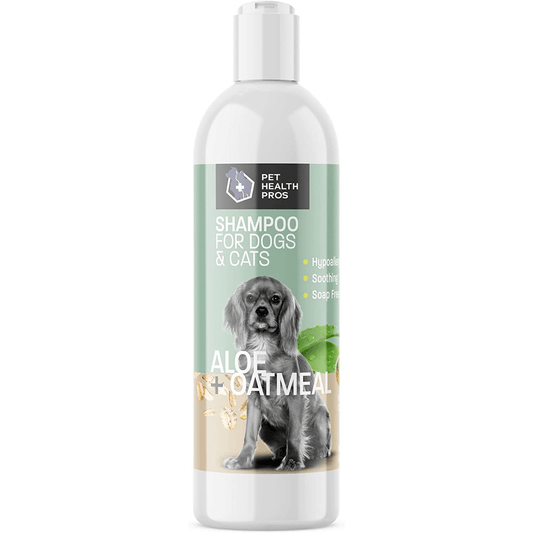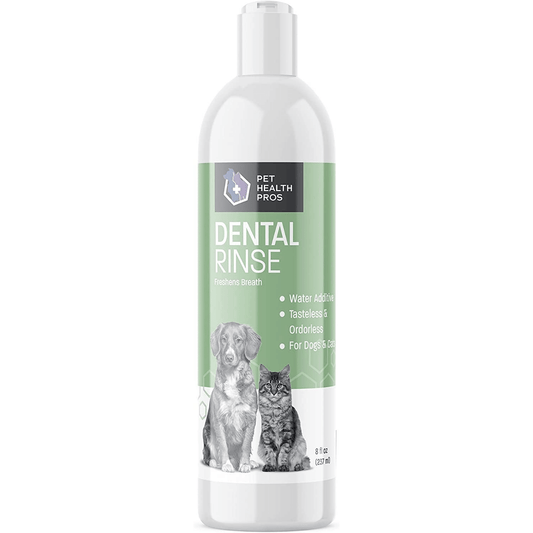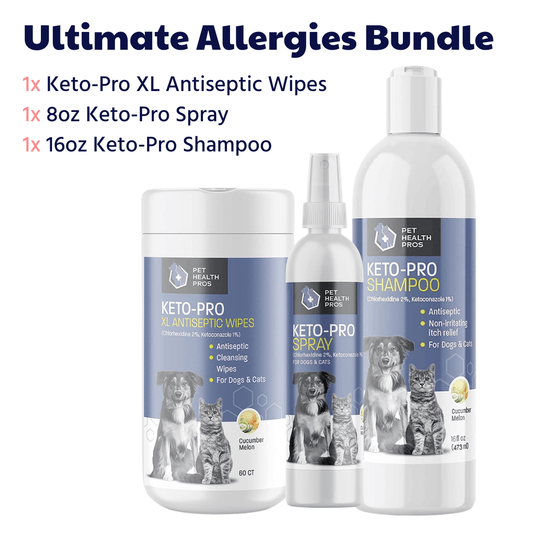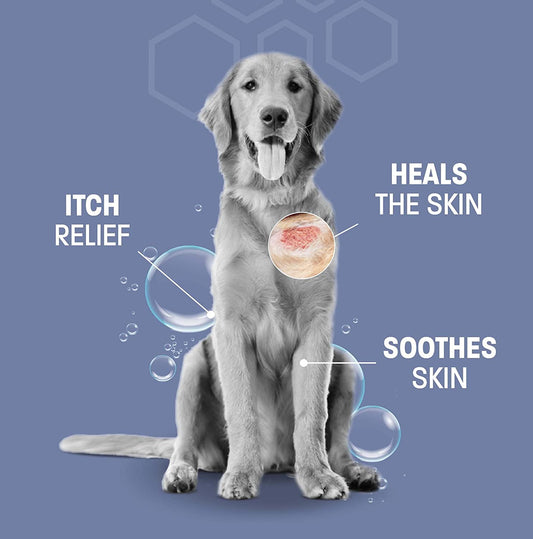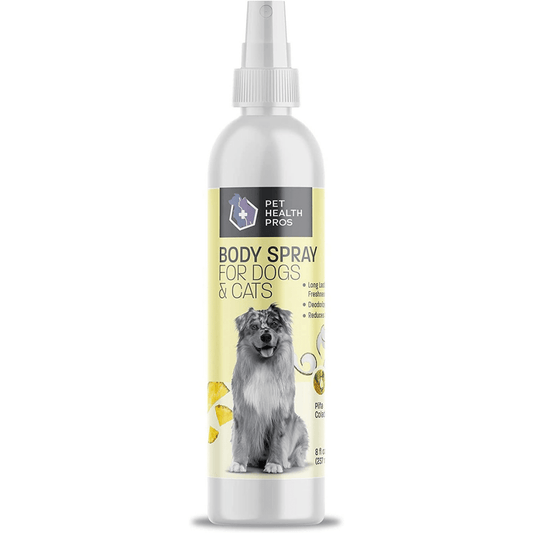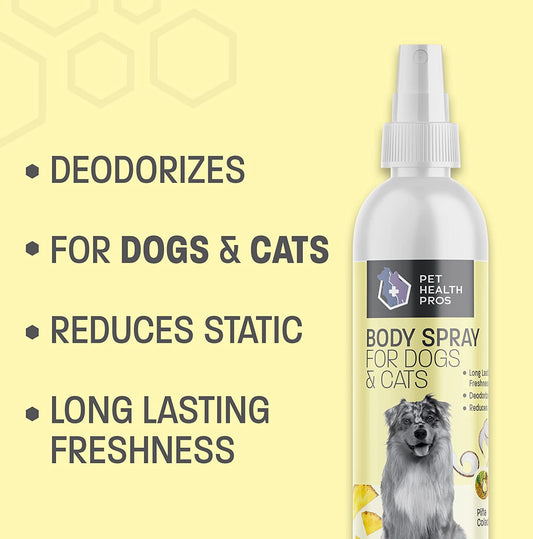Ever caught your dog munching on your favorite shoes or gnawing at the furniture? It's a common problem, and one way to tackle it is with a bitter spray. You don't have to spend a fortune on store-bought sprays; you can make your own! This guide will walk you through creating a bitter spray for dogs DIY style. It's simple, cost-effective, and uses ingredients you probably already have at home.
Key Takeaways
- DIY bitter spray can save you money and is easy to make at home.
- Essential oils, vinegar, and other natural ingredients work well in homemade sprays.
- Proper storage is crucial to maintain the spray's effectiveness.
- Apply the spray in areas your dog frequently chews on.
- If the spray doesn't work, consider adjusting the formula or exploring other solutions.
Understanding the Need for Bitter Spray for Dogs
Why Dogs Chew on Furniture and Other Items
Dogs chewing on furniture and other items isn't just a random act. It's often a way for them to explore their surroundings or relieve stress. Puppies, in particular, chew to ease the discomfort of teething. Adult dogs might chew due to boredom, anxiety, or simply because they enjoy it. Understanding these behaviors is crucial to finding a solution that works for both you and your furry friend.
The Benefits of Using a Bitter Spray
Bitter sprays serve as a non-toxic deterrent that can help redirect your dog's chewing habits. These sprays create an unpleasant taste on the surfaces they are applied to, discouraging dogs from chewing on them. This can be particularly useful for protecting furniture, shoes, or any other household items. Plus, they're easy to use and can be a part of a broader training strategy.
Common Ingredients in Commercial Bitter Sprays
Commercial bitter sprays often contain ingredients like bitter apple, citrus extracts, and vinegar. These components are safe for dogs but taste awful to them, making them effective deterrents. Some sprays also include essential oils for added scent and benefits. However, always check the label to ensure all ingredients are safe for your pet.
Gathering Ingredients for Your DIY Bitter Spray
Essential Oils and Their Benefits
When creating a DIY bitter spray for dogs, essential oils play a crucial role. These oils not only contribute to the bitterness but also offer additional benefits. For instance, citrus oils like lemon or orange can deter dogs due to their strong scent, while also providing a fresh aroma. Lavender oil, on the other hand, is known for its calming properties, making it a good addition if your dog tends to get anxious.
Vinegar as a Key Component
Vinegar, particularly white vinegar, is a staple in many homemade dog deterrents. Its strong, sour taste is unappealing to dogs, making it an effective ingredient in your bitter spray. Vinegar is not only easy to find but also budget-friendly, ensuring you can make a large batch without breaking the bank. Plus, it has natural disinfectant properties, which is a nice bonus.
Other Natural Ingredients to Consider
Aside from essential oils and vinegar, there are other natural ingredients you might want to add to your DIY bitter spray.
- Apple cider vinegar: Similar to white vinegar, but with a slightly different scent and taste that some dogs might dislike even more.
- Aloe vera juice: Known for its healing properties, aloe vera can be soothing if your dog has irritated skin from chewing.
- Cayenne pepper: Just a small amount can add an extra layer of deterrence due to its spicy nature.
Creating a DIY bitter spray can be a fun and rewarding project, allowing you to customize the formula to best suit your dog’s needs while using safe and natural ingredients.
Step-by-Step Guide to Making Bitter Spray for Dogs
Measuring and Mixing Ingredients
Creating a DIY bitter spray for your dog is straightforward and budget-friendly. Start by gathering your ingredients. You'll need white vinegar, water, and a few drops of essential oils like lemon or eucalyptus. Measure equal parts of water and vinegar into a spray bottle, then add about 10-15 drops of your chosen essential oil. Shake well to ensure everything mixes properly.
Proper Storage Techniques
Once your mixture is ready, it’s important to store it correctly to keep it effective. Use a dark-colored spray bottle if possible, as this helps protect the essential oils from light, which can degrade their potency. Store the bottle in a cool, dry place away from direct sunlight.
Testing the Spray for Effectiveness
Before applying the spray all over, test it on a small area of the furniture or item you're concerned about. This ensures it won't damage the material. Observe your dog's reaction to see if the spray effectively deters them from chewing. If it does, you can proceed to treat other areas. If not, consider adjusting the formula by adding more essential oil or trying a different type.
Applying the Bitter Spray Correctly
Identifying Areas to Treat
When using a bitter spray, it's vital to pinpoint the spots your dog frequently targets. Furniture legs, shoes, and even electrical cords are common victims of a dog's chewing habits. Before applying the spray, inspect these areas closely for any damage or evidence of chewing. This will not only help you protect your belongings but also ensure your dog stays safe from potentially harmful objects.
How Often to Apply the Spray
Consistency is key when it comes to deterring your dog from chewing. Initially, you might need to apply the bitter spray daily, especially if your dog is persistent. Over time, as your dog learns to avoid the treated areas, you can reduce the frequency. However, always reapply after cleaning or if you notice your dog showing interest in the area again.
Safety Precautions to Follow
While bitter sprays are generally safe, it's crucial to use them properly. Avoid spraying directly on your dog or near their eyes and nose. If your dog has sensitive skin or any allergies, test a small area first to ensure there's no adverse reaction. Additionally, keep the spray out of reach of children and store it in a cool, dry place.
Remember, using a bitter spray is just one part of the solution. Combining it with behavioral training techniques can be more effective in curbing your dog's chewing habits. Consider consulting Pet Genius, an AI-powered pet health assistant, for more insights on managing your pet's behavior effectively.
Troubleshooting Common Issues with DIY Bitter Spray
What to Do If the Spray Doesn't Work
So, you've mixed up your DIY bitter spray, but your dog seems unfazed and keeps chewing away. Don't panic! Sometimes, a homemade concoction might not be strong enough or the ingredients might not be to your dog's disliking. Here's what you can try:
- Increase the Concentration: Start by adding a bit more of the bitter ingredient to the mix. If you used vinegar, add a little more. If essential oils were your choice, increase the number of drops.
- Test Different Ingredients: Dogs have different tastes, so what works for one might not work for another. Consider trying different bitter agents like lemon juice or apple cider vinegar.
- Reapply Regularly: Sometimes, the spray might wear off quicker than expected. Make sure to apply it consistently, especially in the beginning.
Remember, persistence is key. Your dog might take some time to associate the taste with the object and stop chewing.
Adjusting the Formula for Better Results
If your spray is too weak or too strong, tweaking the formula can help. Here's how you can adjust it:
- For a Stronger Spray: Increase the amount of the bitter ingredient. But be cautious not to overdo it, as it might irritate your dog's nose or skin.
- For a Milder Spray: If your dog seems too bothered by the spray, dilute it with more water. This can make it less harsh but still effective.
- Experiment with Scents: Sometimes, adding a scent that your dog dislikes can enhance the spray's effectiveness. Try adding a few drops of a pet-safe essential oil.
Ensuring Your Dog's Safety
Safety should always be your top priority. Here are some precautions to keep in mind:
- Avoid Sensitive Areas: Do not spray near your dog's eyes, nose, or open wounds. These areas are sensitive and can be easily irritated.
- Check for Allergies: Before using the spray extensively, test a small amount on your dog's fur to ensure there's no allergic reaction.
- Supervise Initial Use: Keep an eye on your dog the first few times you use the spray to ensure it doesn't cause any distress or discomfort.
Safety first! Always prioritize your dog's well-being when trying out new solutions.
Alternatives to DIY Bitter Spray for Dogs
Commercial Products to Consider
When making your own bitter spray isn't cutting it, there are plenty of commercial options to explore. These products are specifically designed to deter dogs from chewing and can be found at most pet stores. Look for sprays with natural ingredients for a safer choice. Some popular options include:
- Bitter Apple Spray: A tried-and-true solution that's been around for years.
- No-Chew Spray: Often infused with natural oils to protect your furniture and belongings.
- Anti-Chew Deterrent: Available in different scents and formulations to suit your dog's needs.
Behavioral Training Techniques
Sometimes, the root of the problem isn't what your dog is chewing, but why. Addressing the behavior can be more effective than any spray. Here are some techniques:
- Positive Reinforcement: Reward your dog when they choose toys over furniture.
- Redirection: Offer a chew toy whenever you catch them nibbling on something they shouldn't.
- Consistency: Be firm and consistent with commands to help them learn quickly.
Consulting a Professional for Help
If your dog continues to chew despite your best efforts, it may be time to bring in a pro. Dog trainers and behaviorists can provide insights and strategies tailored to your dog's specific needs. They can assess whether anxiety or boredom might be the underlying cause and suggest targeted solutions.
Remember, every dog is different. What works for one might not work for another, so be patient and persistent in finding the best approach for your furry friend.
For additional tips on managing your space and accommodating your furry friend, consider discovering effective dog-proofing hacks. This can complement your efforts by creating an environment that naturally discourages unwanted chewing.
If you're looking for other options besides making your own bitter spray for dogs, there are plenty of great choices available. You can find ready-made sprays that are safe and effective. These products can help keep your dog from chewing on things they shouldn't. For more tips and to explore our selection of pet care products, visit our website today!
Wrapping It Up
So, there you have it! Making your own bitter spray for dogs isn't as tricky as it might seem at first. With just a few simple ingredients and a bit of time, you can create a safe and effective deterrent to keep your furry friend from chewing on things they shouldn't. Plus, it's a great way to save some money and know exactly what's in the product you're using. Remember, consistency is key when training your dog, so keep at it and you'll see results. Happy DIY-ing, and here's to a chew-free home!
Frequently Asked Questions
Why should I use a bitter spray for my dog?
A bitter spray helps deter dogs from chewing on furniture, shoes, or other household items. It's a safe way to protect your belongings without harming your pet.
What are some common ingredients in a DIY bitter spray?
DIY bitter sprays often use ingredients like vinegar, citrus, and essential oils, which are safe for dogs but have a taste they dislike.
How do I know if the bitter spray is working?
You'll know it's working if your dog stops chewing on the sprayed areas. You might need to reapply a few times for the best results.
Can I use any essential oil in the spray?
Not all essential oils are safe for dogs. Stick to dog-safe options like lavender or eucalyptus, and avoid oils like tea tree or peppermint.
How often should I apply the bitter spray?
Apply the spray as needed, usually once a day or whenever you see your dog starting to chew on something they shouldn't.
What should I do if my dog still chews on things?
If your dog keeps chewing, try adjusting the formula or consulting with a vet or professional trainer for additional advice.

